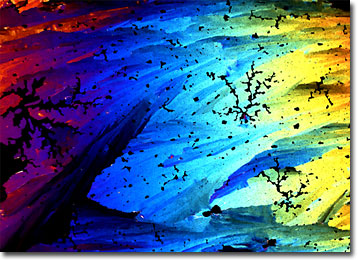Polarized Light Microscopy Digital Image Gallery
Nicotinamide
Also known as niacin and vitamin B3, nicotinamide is a nitrogen heterocyclic organic compound. When combined in vivo with the nucleotide adenosine, nicotinamide adenine dinucleotide (NAD), which functions as a soluble electron carrier in biochemical reactions, is formed.

Nicotinamide serves a variety of functions in the body, but is particularly crucial for the production of steroids, fatty acids, and hormones. The biochemical also aids in the formation of red blood cells and exhibits vasodilating and cholesterol-lowering properties. Though important, nicotinamide is considered a non-essential vitamin because the amino acid tryptophan can be biosynthesized into vitamin B3 within the body. Nevertheless, regularly consuming natural dietary sources of nicotinamide, such as lean meat, cheese, beans, and whole grains, is a good way to ensure that sufficient levels of the vitamin are maintained. Absorption of dietary nicotinamide takes place in the small intestine and the biochemical is excreted in the urine, although a minor amount is sometimes stored in the liver.
A deficiency of nicotinamide is known as pellagra, a disorder characterized by skin sores, gastrointestinal problems, and mental aberrations. In the early stages of pellagra, sufferers become unusually sensitive to light and may form what first appears to be serious sunburn. This general reddening of the skin soon takes on the form, however, of scaly, reddish brown lesions. Confusion, depression, delirium and other neurological symptoms tend to occur most often in the later stages of the condition. Pellagra is relatively rare in many parts of the world, but in areas where corn, a food that does not contain nicotinamide or tryptophan, is the chief component of the diet, it is more common. The nutritional disorder is also sometimes a side effect incurred by chronic alcoholics.
